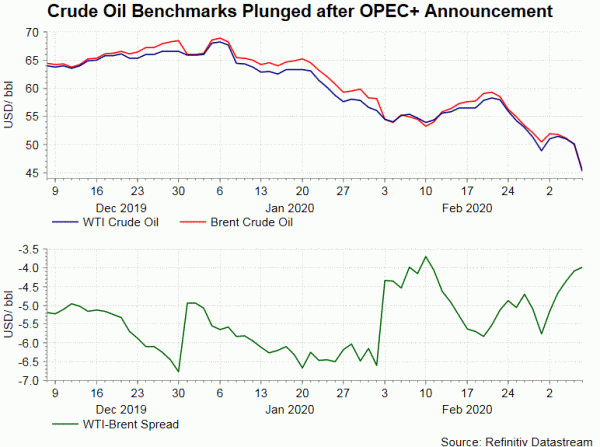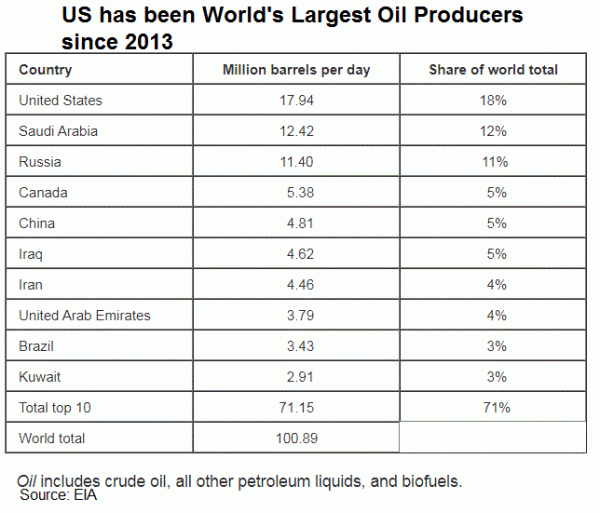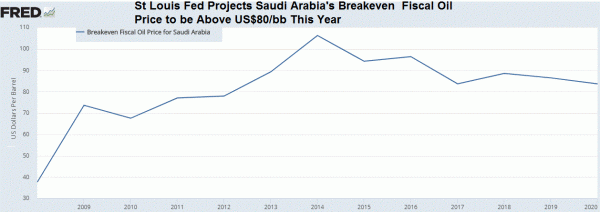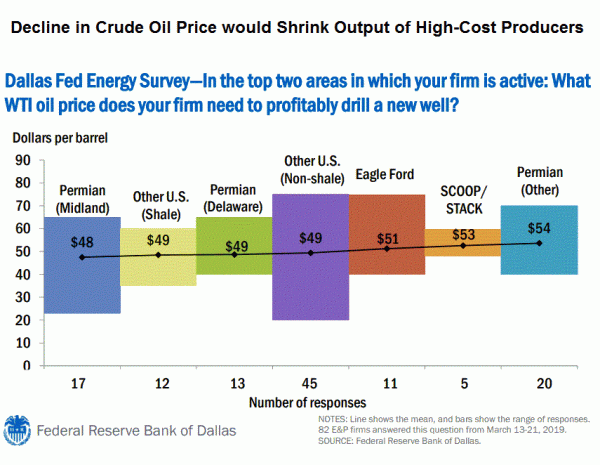Oil market roiled by the surprising collapse of OPEC+ talk. For the time since late 2016, OPEC members and a number of non-OPEC oil producers failed to agree on a deal to limit output, as Russia refused to commit. In response, Saudi Arabia, the largest producer in OPEC and the second in the world, launched a price war, massively reducing crude oil prices of all grades it produces and raising output to above 10M bpd from next month. The move would inevitably lead to retaliation from other producers, while not all have the capability to compete. We expect the price war would lead to increase in oil supply in the coming months, a more concentrated oil market with low-cost producers gaining more shares and the decline in US shale production.
OPEC proposed to extend the existing output cut of -1.2M bpd to end -2020. Furthermore, it suggested to deepen the cut by an additional -1.5M bpd June 30, 2020, applying pro-rata between OPEC (1M bpd) and non-OPEC produced (0.5M bpd). However, negotiations broke down as Russia objected the proposal last Friday. The collapse signals that OPEC members, as well as the non-OPEC participants, are free to produce at any amount after March 31.
The collapse reveals that the arrangement of coordinated output cut with the aim of defending oil price is unsustainable. OPEC+ first agreed to limit production in December 2016, in face of lower global demand and US rapid increase in shale production. Several rounds of extensions were implemented. However, negotiations had been challenging with Russia agreeing to commit only at the last minute. Indeed, such arrangement – aiming at defending price instead of increasing market shares- lacks incentive for producers with low breakeven costs.
It is estimated that Russia’s breakeven fiscal oil price is below US$45/bbl this year, compared with over US$80/bbl in Saudi Arabia. Russia would find it more comfortable to weather lower oil price, a scenario likely to be driven by global decline in demand amidst the coronavirus outbreak. As such, its focus is more on gaining market share. Once the world’s second largest producer, the status was overtaken by the US in 2012. The US has become the biggest producers since 2013, thanks to the rapid shale gas investment in Texas and North Dakota. The Obama administration was able to lift the 38-year oil export ban in 2015 in light of the ample and steady domestic supply. Therefore, it is not unreasonable for media reports relating Russia’s move to target US shale oil.
According to Dallas Fed, the breakeven prices for new wells in the US range from $48-54/bbl. Ramp-up of output in Saudi Arabia and, very likely, Russia would be significant in as soon as 2Q20. Weakness in crude oil prices as a result would inevitably expel some high-cost producers, leading to a drop in US production.
WTI-Brent spread narrowed to a level not seen since 2017, with the front-month Brent crude oil only trading at a premium of US$4bpd above WTI. While demand for the former is largest domestic (in the US), exports is important for the latter (North Sea oil) with China and other Asian countries major customers. Potential increase in oil supply and inflow of cheaper oil from the Middle East could reduce its demand.

















